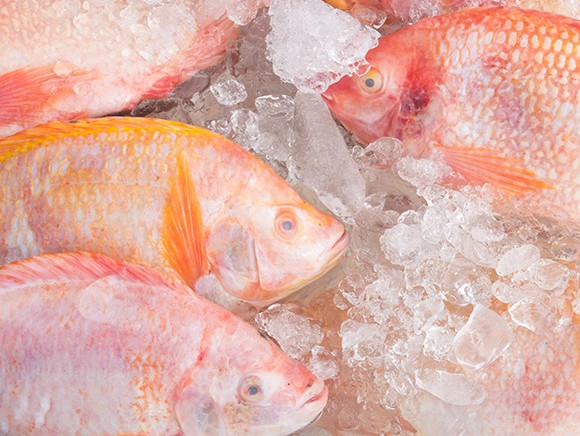
Will we have enough fish for the growing world population in twenty years? According to Prof. Johan Verreth, there won’t be enough from the fishing industry. “The 100 million tonnes of additional fish that are required will come from aquaculture.”
“The fishing industry across the seven seas already hit its peak—roughly 90 million tonnes of fish annually—about twenty years ago,” says Prof. Verreth. This professor of Aquaculture and the Fishing Industry retired from his post at Wageningen University & Research on 22 March. “The fishing industry will continue to be important in the future. It provides a nearly organic fish product, without the use of feed, antibiotics, freshwater or land. On the other hand, fish farming has to justify its use of all these tools. Cultivation has to be appropriate and create a minimal carbon footprint. That is quite a task.”
Fish production via aquaculture is increasing sharply worldwide. In 2015, at roughly 70 million tonnes, this was comparable to the yield from the fishing industry, but already greater than beef production. “It wouldn’t surprise me if, in the foreseeable future, fish farming production exceeded the yield of chicken farming (90 million tonnes) and pig farming (100 million tonnes). Of the amount of fish we consume every year, roughly half of it comes from aquaculture. This makes fish the greatest source of animal-based protein,” concludes Prof. Verreth.
Canned tuna is the most eaten fish in the Dutch households, followed by fish sticks, smoked salmon and unprocessed salmon. Herring only comes in at number five. Tuna is also the most caught fish worldwide. Two species of tuna are involved, yellowfin and skipjack, which account for 4.7 million tonnes combined. Skipjack primarily comes from the western and central areas of the Pacific Ocean from fish populations that are still thriving. “You also have to consider that fish consumption per capita is increasing sharply,” says Prof. Verreth. Since the 1970s, this number has roughly doubled to over 20 kg per person annually. In the West, it is largely the elderly that eat saltwater fish. “The population isn’t growing there anymore and western populations tend to be well off, so they can afford better quality fish that is more expensive, like salmon,” says Prof. Verreth. Fish consumption will increase there by several percentage points in the years to come.
The case is different for Africa and Asia. Populations on those continents are growing sharply. By 2022, consumption will have grown there by dozens of percentage points. “The question is whether the required 100 million tonnes can be achieved in the next 20 years,” says Prof. Verreth. “In African and Asian rural areas, extensive farming can be done in places such as dried out river branches, so that the input remains low. This will provide affordable, urgently needed fish proteins for the poorer populations.” In order to farm an additional 100 million tonnes of fish, investment for innovations is necessary. “You have to consider breeding fish, which scarcely occurs these days. You also don’t want a “greedy fish”: you want a healthy animal that consumes fish feed effectively. That feed cannot be dried fish food either, it has to be a plant-based feed. Not to mention that the suitable alternative of soya beans has to be excluded, because they demand too much agricultural space,” says Prof. Verreth. As an example of improvement, he mentions the conversion efficiency of feed protein into edible protein from meat or fish. According to his calculations, this amounts to a number 34% higher than what the literature mentions for chicken; for tilapia, the efficiency lies at 13%-22%, depending on the parts of the fish that are eaten, which is determined by culture.
The limit for feed efficiency has not yet been reached by any means. A road to further optimisation is the development of an ecological production system. Specifically, tilapia and prawns are extremely well suited for this. The fish swim in a pond ecosystem. The feed will be low in value, yet the production will be high. The waste that the fish produce in the pond will be reused for the production of fish feed. In a system like this, bacteria and other microbial communities create flakes that are immediately utilised by the fish or prawns. In this way, protein efficiency increases quickly without substantial, costly input. This “nutritious pond” concept also appears to increase the immune resistance of the fish, hence fewer illnesses.
“Fish is the greatest source of animal-based protein”
Source: ©KO BACKPACKO/SHUTTERSTOCK.COM